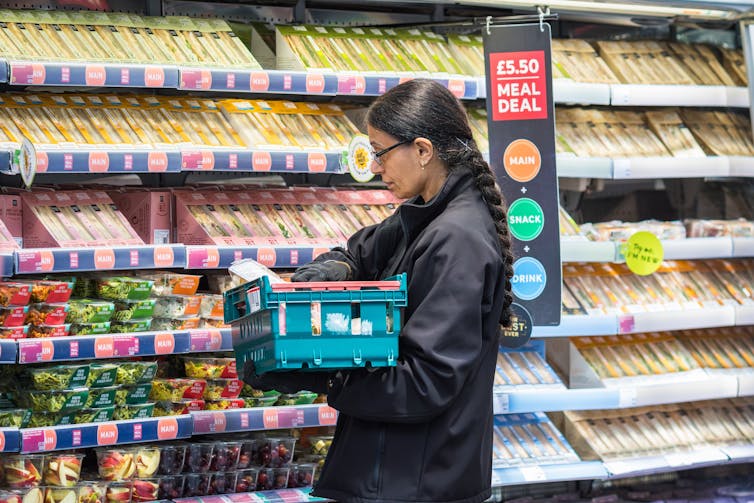It seems like they have always been there, on the street corner, open long hours and available whenever we need a pint of milk.
Corner shops and convenience stores have been serving our communities for decades, and now they are going from strength to strength.
Morrisons has just announced it wants to open 400 more of its Daily convenience stores. Earlier this year, Asda opened 110 smaller Express stores, and Sainsbury’s and Marks & Spencer, whilst not at that pace, also want to grow their convenience empires.
Meanwhile, the Co-operative Group has around 2,300 convenience stores. And they all remain behind the market leader Tesco, which in adding One Stop and Booker to its portfolio, has built a convenience chain of over 3,000 stores.

There are currently 49,388 convenience stores in the UK, employing 437,000 people, and generating sales of more than £47 billion. These convenience stores are broadly spread amongst urban, suburban and rural locations. Store numbers have risen by about 3,000 and jobs by 72,000 since 2018.
The Co-operative Group operate about 7% of all convenience stores. Multiple retailers such as Tesco, Morrisons and Asda run 23%. Independent retailers operating under a brand such as Spar, Londis, Premier, Costcutter and Day-Today comprise 31%. And independent convenience and corner shops trading using their own name make up 39% of store numbers. Tesco and the Co-operative Group have about half of the market sales between them.
Convenience stores have gained renewed importance for several reasons.
First, the long love affair with the large, car-dependent superstore or hypermarket has cooled. The market is saturated, the format has challenges from sustainability and shifting consumer demand to discounters, and planning permission is harder to obtain. These stores still have a large market share, but they are not the growth area they once were.
Second, the steady market penetration of online retailing, especially in food, has enhanced the role of top-up shopping. Online and mobile retailing has further expanded into “quick commerce” (with deliveries) using convenience stores to supply on demand.
Third, the COVID pandemic and especially lockdown, drove online sales, with more caution around large stores, and actually encouraged people to explore their local area and shop offer. Local convenience stores received a massive boost in sales. Whilst the economy began recovering from COVID and some routines resumed, working from home has still continued in part and sustained that boost for local and convenience stores.
Finally, multiple retailers have recognised these changes in consumer patterns and sought to move focus from out-of-town stores to ones that fit better with customer lifestyles, work and travel patterns, whatever the location or time.
Eye-catching
Morrisons’ announcement of hundreds of new convenience stores and Asda’s 100-plus stores opening in February are eye-catching (though these Asda stores are conversions from purchased outlets, so there is no growth in overall store numbers). For Morrisons, recent openings have mainly been conversion of McColls stores, though the ambition is now to grow numbers this way and organically.
Morrisons and Asda have been losing grocery market share. In September 2022, Morrisons was overtaken for fourth position in the Great Britain grocery market by Aldi, showing the tough competition from the relentlessly expanding discounters. Aldi and Lidl continue their long-term plans for store expansion, including Aldi Local convenience stores. Morrisons’ and Asda’s focus on convenience stores gives them increased market presence and sales growth.
The convenience store market has seen different opportunities open up with stores linked to petrol stations, in rural villages, as well as on high streets and at transport hubs. The services offered have expanded considerably with food-to-go and in-store prepared food becoming major areas, and profits are there to be made.
For the smaller independent retailers, growth has come as communities have begun to realise not only the value of the goods sold in the convenience store, but its social value. Convenience stores can act as the “social glue” of many places, harking back to the local shopkeeper as the foundation of a village or place, performing a community function.
In Scotland, the Go Local project has built on a successful “healthy living” programme to support retailers and producers to offer locally sourced products in convenience stores. Focused on healthy products, initial results have shown a sustained increase in local sales boosting the community and businesses, and reducing environmental impacts.
Whilst the convenience sector would seem to have a positive future, focused on being in tune with consumer demands, there are potential concerns.
For some consumers, the perception of the local or convenience store remains of a limited range and high prices, even though that is far from the case in many stores.
There is no doubt it is tough being a retailer at present with costs so high. Some locations are challenged as consumer behaviours change, and so there is a need to renew and rethink the business constantly, adding services and offers to attract new or different groups of people.
Retailers are also concerned about the burden of regulation and restrictions they may face. Convenience store retailers may be less able to cope with these requirements.
Core product ranges of many such retailers (including cigarettes, vapes, alcohol and processed foods) are under threat from government legislation. Changes affecting operating practices like deposit return schemes for drinks containers and higher national minimum wages, produce more challenges in a smaller group or an independent convenience store than in a chain.
Then there is the widespread retail concern over an explosion in retail crime post-pandemic as the cost of living affected so many people. Retailers, and not just convenience store owners, perceive this as a fundamental operating concern, and are looking for government support and action.
The last few years though have shown that the sector is ripe for investment. Retailers large and small are recognising that convenience is something that, done right, consumers will react positively to and feel good about.

